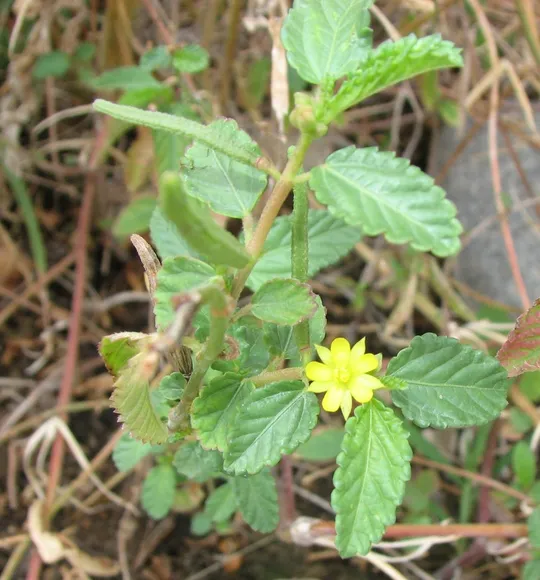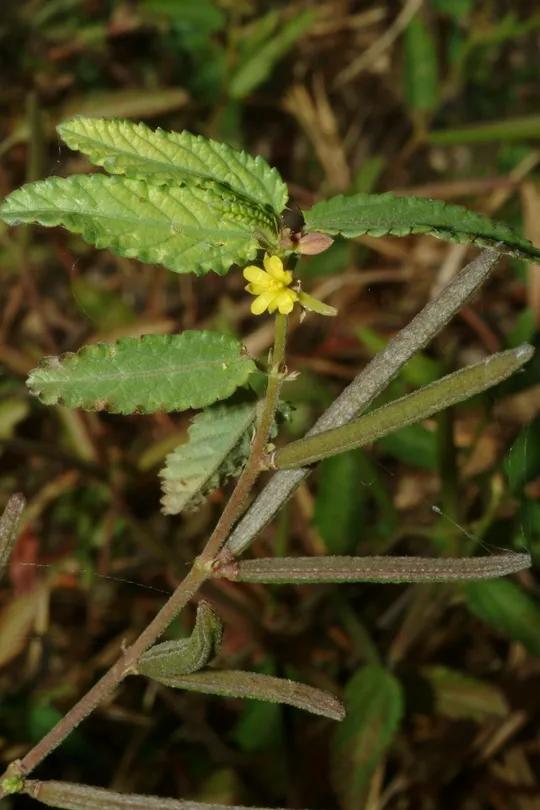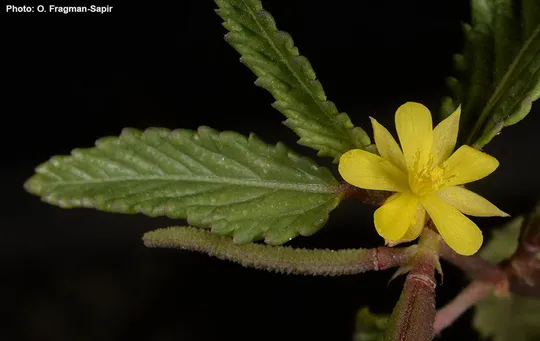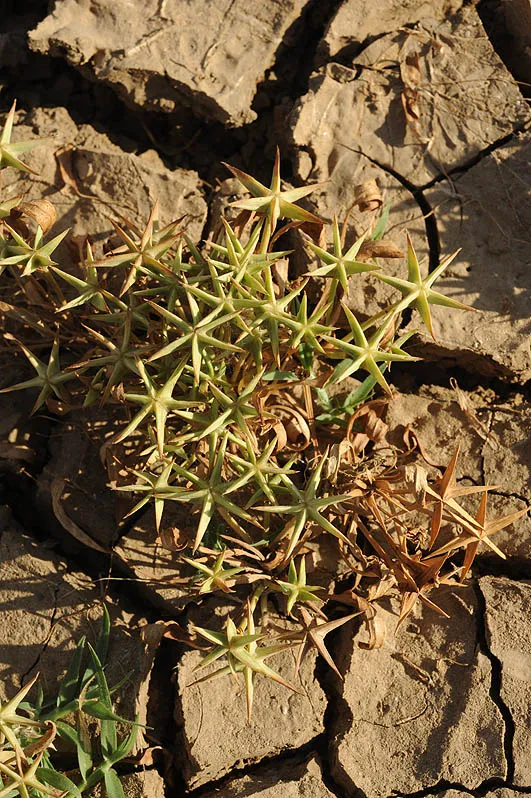Wild Jute, Wild Jew's Mallow
Corchorus trilocularis



Corchorus trilocularis is found in three
regions: the Dead Sea, Kinarot Valley (upper section) and the Jezreel Valley at
five sites, and there may actually be ten sites. In the Dead Sea area, it is
found at three sites in En Gedi and in Ne’ot HaKikar. In the Upper Jordan Valley,
it survived only in Tirat Zvi in the Bet She’an Valley, but has disappeared
from Bitanya where Eig collected it in 1924 and from another two sites around
Bet She’an where Zohary collected it in
Valley C. trilocularis survived only in
Bet HaShita (Azaria Alon, 1983), but disappeared from Tel Yosef and from Bet Alpha.
The species is extinct in the Lower Galilee, where Eig collected it in 1924
between Bet Ǧan and Sharona. The identity of another observation from the
Judean Mountains is uncertain.
Agricultural fields and orchards. In Israel, it is found particularly
in date palm groves. Corchorus
trilocularis is a noxious weed in tropical and subtropical
agricultural areas of the Old World and in Date palm groves and agricultural
areas where herbicide use is minimal. Its primary habitat is apparently edges
of traditionally cultivated fields.
The genus Corchorus
comprises 40 species growing in tropical areas. An additional species that
grows in Israel is C. olitorius. It
differs from C. trilocularis in its larger
and extremely pointed leaves that have two bristles at the base of the leaf blade
(in addition to its two bristly bracts), by its larger flowers and by the
glabrous (not tuberculate) fruit. C. olitorius is also extremely rare
and extinct in almost all its sites, but it is also an agricultural crop and probably the individuals found in Israel
are feral plants of old or ancient crops (Van Wyk, 2005). The plant is grown as
an edible vegetable, a medicinal herb and has recently also been used as a
substitute for Cannabis fibers. C. olitorius is presumed to have
originated in India, but today it is an agricultural crop and noxious weed in
extensive tropical regions of the world (Van Wyk, 2005). C. trilocularis is found in Israel only as a noxious weed
growing in irrigated fields; its presence in Israel may be random and its
origin is probably not local. It is listed as a red species due
to its endangered status in the Jezreel Valley and Lower Galilee.
•
Corchorus
trilocularis was as rare in the past as it is today. The number of
regions and the number of sites where the species grows have decreased considerably.
It was once common in the Jezreel Valley, in the upper Jordan Valley and even
in the Lower Galilee, but it is extinct from almost all the sites in these
regions.
•
C. trilocularis
is listed as a weed and its reduction may be due to effective weed control.
•
The species is
not protected in a nature reserve in Israel.
•
C. trilocularis
is found in tropical areas worldwide and is mostly not endangered, although
according to IUCN records it is extinct in Sri Lanka.
Small plots in cultivated fields in which Corchorus trilocularis grows should be demarcated to
allow the populations to survive, while monitoring them on a regular annual basis.
It should be grown in gardens in the Dead Sea region (Belcher and Belcher,
2001). It should also be preserved in fields in which there is now intensive
herbicide application.
Corchorus trilocularis is found in in
tropical Asia and tropical Africa (mainly in the east) and in North Africa. In
our region, it is found in Egypt and along the length of the Jordan Valley in
Israel and in Jordan. In Australia, it is an invasive species.
Corchorus trilocularis is an annual grass
characteristic of tropical areas that grows as a weed in the Rift Valley regions
and is on the brink of extinction in Israel. The inclusion of this species in
the Red Book was arguable, as it is a weed with no primary habitat in Israel
and possibly not outside Israel either. C. trilocularis
is at the northern limit of its range in our region, and is now patchy and rare.
בלכר, מ. ובלכר, א. 2001. גינון בצמחי בר בבקעת ים המלח – כלי לשמירת הטבע והנוף. רשות שמורת הטבע והגנים ובית הספר השש שנתי "עין גדי", עמ' 24.
Van Wyk, Ben-Erik, 2005. Food Plants. Timberpress. p. 151.
Current Occupancy Map
| 1000 squre meter pixel | 5000 squre meter pixel | 10000 squre meter pixel | |
|---|---|---|---|
| number of observations | 0 | 0 | 0 |
| in total pixels | 0 | 0 | 0 |
| Family | Tiliaceae |
| Classification | On the endangered species list |
| Ecosystem | Desert and Semi-steppe Belt |
| Chorotype | Tropical |
| Conservation Site | En Gedi |
| Rarity |
1
3
6
|
|---|---|
| Vulnerability |
0
3
4
|
| Attractiveness |
0
0
4
|
| Endemism |
0
0
4
|
| Red number |
1
3.7
10
|
| Peripherality | S |
| IUCN category | DD EW EX LC CR EN VU NT |
| Threat Definition according to the red book | Vulnerable |
 Based on:
Based on:






